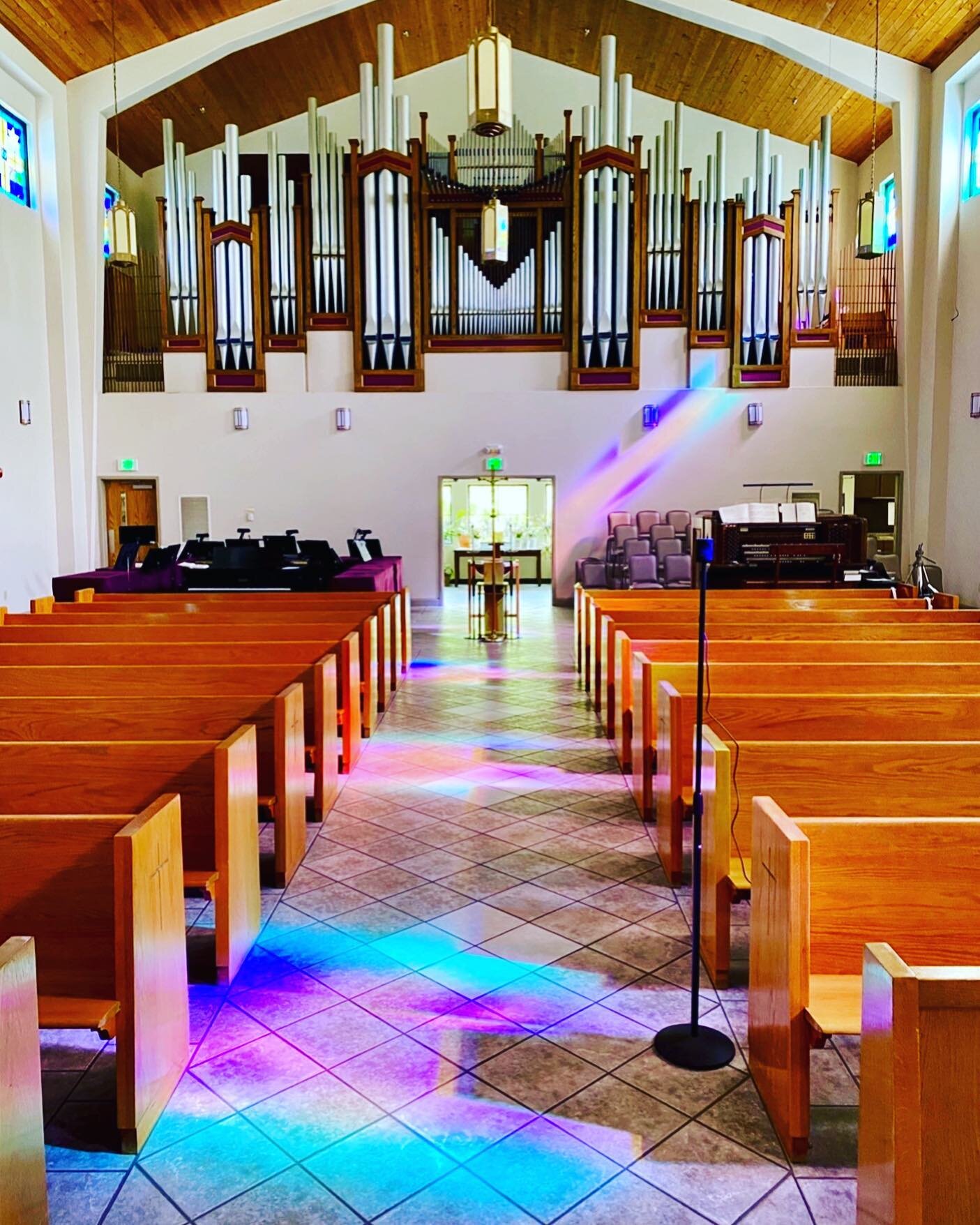We have a singing congregation and we are blessed with a fine acoustical environment for music, a large and wonderful pipe organ, and a large liturgical choir. It all combines to a vibrant atmosphere for singing and for chant. And that is what we do -- literally, from beginning to end of the Divine Service. Of course, the readings from Scripture, the sermon, and the prayer of the church is spoken. Fortunately, we have a good acoustical environment for that as well. Our PA system does not replace the spoken voice but merely enhances it so that people still hear the sound coming from the Pastor.
Acoustics were part of the grand design of our structure. We knew we would eventually have a pipe organ of substance (this came earlier than we had thought and a larger instrument than we thought we would be able to afford at 65 ranks). We have some stained glass but not the large side windows or large window over the altar of some church structures. We have no carpeted surfaces in the whole building. It is all concrete with ceramic tile, hardwood floors under the altar, and no pew pads either. The ceiling is stained and varnished wood and the center of the nave is 37 feet high off the floor. The wall surfaces are 1 1/2 inches of drywall. There are plenty of architectural details, slanted walls, and pillars to provide not only visual interest but also acoustical aid for the benefit of a warm and reverberant building.
Here is a wonderful article by an Orthodox architect in which he addresses the specific concerns of Orthodox worship environments but also gives attention to the acoustical differences between a building that serves Bach's music and one that befits Orthodox chant. It is particularly helpful in looking at the challenge before us as we shape our buildings because, as Churchill said, they shape us long after they are built. I highly recommend it for those looking at renovating, building, or adapting structures for the special purpose of worship. While it may be useful for those with evangelical styles of worship, it is essential reading for liturgical churches. If we pay attention, we may just improve the singing along the way!

No comments:
Post a Comment